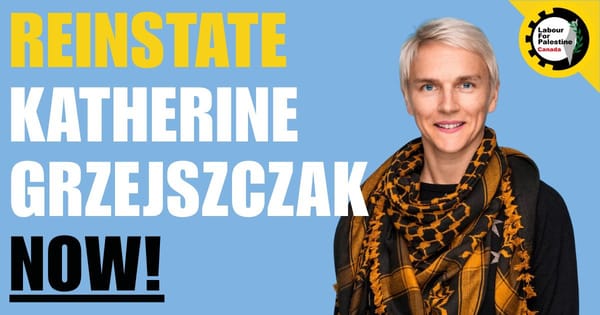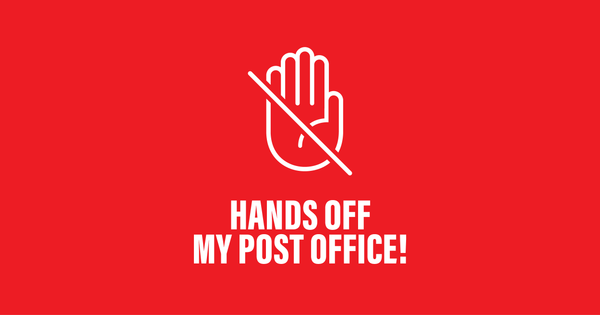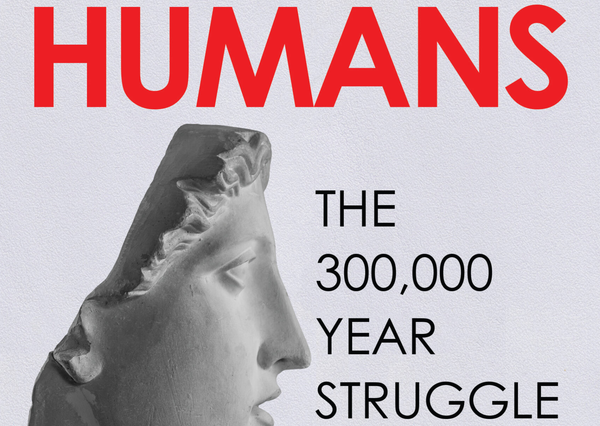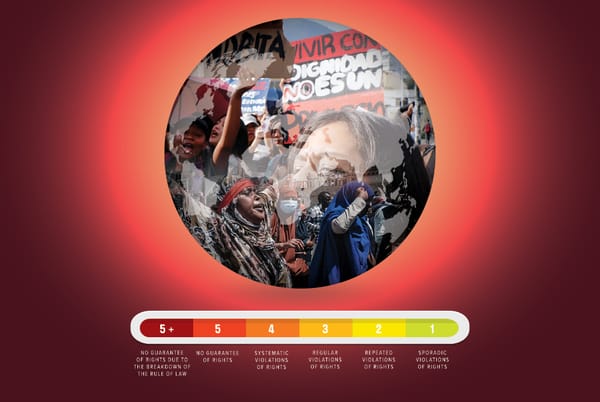
Hi Class Struggle subscribers,
This week the newsletter turns one year old! Much has happened in the worlds of labour and political economy over the past year. Workers have seen some victories, while struggling through a deadly and on-going pandemic. Employers and governments across North America have resisted the just demands of labour at every turn, as they do. Through it all, I’ve tried to make this a space for critically examining the issues faced by workers, as well as spotlighting struggles for a more socially just and equal economy. As 2022 rolls on, Class Struggle will aim to do the same.
Thank you to all the subscribers and readers for making writing this newsletter something I look forward to every week!
In this edition, we turn our attention to Canada’s big banks, their excessive profits and their often overlooked labour exploitation.
It’s no secret that the major banks in Canada have made out like bandits over the past decades. Their fortunates since the start of the pandemic have been no different. After minor earnings reductions in 2020, the six chartered banks posted record profits for 2021.
Royal Bank of Canada, BMO, TD Bank, CIBC, Scotiabank and National Bank earned combined profits of $57.6 billion for fiscal year 2021. Royal Bank led the pack with more than $16 billion in net profit, followed by TD Bank, which gained roughly $14.3 billion. On average, bank profits grew by 46 per cent between 2020 and 2021, one of the largest year over year increases to date. CIBC, outdoing its competitors, managed to increase its profits by a whopping 68 per cent in 2021.
Admittedly, 2021’s record yearly profit growth in part reflects the banks rebounding, as the overall economy did, after the more difficult pandemic months of 2020. However, it’s also indicative of an economy that, after decades of deindustrialization and deregulation, has “financialized” and seen banks and financial institutions grow by enormous size and profit. News of first quarter earnings for this year give every indication that bank profits will continue to soar.
The banks’ record profits in 2021 unsurprisingly boosted earnings per share as well. Annual earnings per share rose by 49 per cent between 2020 and 2021, with CIBC managing to increase its share price by nearly 80 per cent. All six chartered banks have ongoing stock buyback plans aimed at raising share prices further and increasing dividend payments, which go mostly to the wealthy. TD Bank and RBC alone plan to buy back 50 and 45 million shares this year, respectively.
Of course, the CEOs of Canada’s largest banks are compensated handsomely for sitting at the helms of these profit-maximizing machines. The total compensation of bank CEOs averaged well over $9 million in 2020 (figures on executive compensation for 2021 haven’t been released yet). David McKay, head of Royal Bank and the highest paid among bank CEOs, made more than $10.8 million for 2020.
Keep in mind that this was compensation being earned at the height of the COVID-19 crisis, when workers were either facing job loss and economic insecurity or working through a deadly pandemic. In an act of shared sacrifice, most bank CEOs took “cuts” to their salaries in 2020. However, like other corporate executives, direct salaries make up a small component of total earnings; when stock options and other incentive-based pay are factored in, many bank CEOs saw their total compensation actually increase. Great work, if you can get it.
Record profits, outlandish executive compensation and government bailouts at the major banks frequently generate criticism and outrage. Many of us have grown accustomed to thinking about banks and major financial institutions as extractive entities that earn profit based solely on their power over money and credit. Less often considered is the significant labour exploitation that takes place in the banking sector, particularly among frontline, customer service workers. Yet, examples of the shoddy labour practices of the major banks continue to pile up.
In early February, the Ontario Court of Appeal delivered a victory to roughly 35,000 retail bank employees who are involved in a class action lawsuit against CIBC, alleging that the bank forced them to work unpaid overtime hours dating back to 1993. The Court upheld the decision of a lower court that CIBC’s overtime policy contravened the working time rules set out in the Canada Labour Code, the federal labour standards legislation that regulates work in commercial banks.
The case was originally brought by representative plaintiff and former CIBC teller, Dara Fresco, in 2007 and is the largest unpaid overtime class action lawsuit in Canadian history. After knowingly violating overtime pay regulations for decades, the bank then fought these workers in court for nearly 15 years. While the tellers and other frontline staff are seeking $500 million in unpaid compensation, damages won’t be determined until September of this year.
The CIBC case was brought alongside a nearly identical unpaid overtime class action lawsuit against Scotiabank. The latter bank chose to settle with 15,000 tellers in 2014 and eventually paid $20.6 million to some of the affected employees.
CIBC, in particular, has been in the spotlight several times because of labour issues. In February of last year, a CIBC call centre in Toronto was the site of a COVID-19 outbreak. Employees at the call centre reached out to the Toronto Star to tell their story after repeatedly having their requests to work from home denied by their employer. The bank continued to have workers on-site at the affected location, despite public health recommendations to allow all those who were able to work from home. In 2017, the bank came under fire for its decision to outsource up to 130 jobs then located in Toronto to India. Those losing their jobs were expected to provide training to ease the “transition.”
In 2017, TD Bank was at the centre of a controversy after three employees spoke out against what they described as the “incredible pressure” to sell financial products to customers who in many cases either didn’t need them or couldn’t afford them. In response, hundreds of tellers from five of the six major banks came forward about systematic and relentless pressure to meet sales targets. Following these stories, TD’s share price dropped by 5.5 per cent. This eventually led to another class action lawsuit, this time brought by shareholders who allege that the bank’s sales pressure tactics contributed to misleading investors about the soundness of TD finances.
The above examples and many others demonstrate that commercial banks are sites of both worker and consumer exploitation. In the former case, workers in banks are often poorly-protected by employment standards legislation and lack union representation.
Banking is mostly a federally-regulated industry, meaning that the labour and employment rights of workers are covered by the Canada Labour Code, not by comparable provincial legislation. However, banking is unlike other federally-regulated industries in the private sector. Whereas air, rail and road transportation, telecommunications, and oil and gas are all dominated by men, banking is the only federal industry with a labour force made up by a majority of women. According to the last Federal Jurisdiction Workplace Survey in 2015, women make up only 38 per cent of the federally-regulated workforce; in banking, however, they account for 60 per cent of workers. Women are, however, more likely to be working in precarious jobs, characterized by some combination of involuntary part-time or insecure hours, low wages and fewer regulatory protections, such as access to Employment Insurance.
As of 2019, women have been a slight majority of union members in Canada. However, the story in the federal private sector, and in banking in particular, is noticeably different. Across federally-regulated industries, men are the majority of union members. The banking sector is a big part of the reason for this inversion of the gendered trend of union membership federally. In terms of workforce size, banking is by far the largest federal industry with just more than 28 per cent of total federal employees. But the industry is also characterized by a feminized labour force and a very low level of unionization. Whereas 34 per cent of all workers in the federal private sector are union members, only around 7 per cent of those working in banking are unionized.
A lack of union protection leaves frontline bank employees, like those involved in class action lawsuits, susceptible to exploitation and employment standards violations. Aside from the postal service, the banking sector also has the highest number of sexual harrassment complaints in the federal jurisdiction. However, given the much greater union coverage among postal employees, it’s reasonable to assume that incidents of sexual harrassment are more likely to be reported among posties than they are among bank workers. A feminized labour force with little union protection likely faces much greater levels of sexual harrassment than is borne out by the official numbers.
Labour issues in the banking industry should encourage us to revisit past efforts to form unions among this heavily feminized workforce. For example, the Service, Office, and Retail Workers Union of Canada (SORWUC), a radical union formed out of the feminist movement in the mid-to-late 1970s, offers an historical example of an attempt to organize female-dominated workplaces neglected by the traditional labour movement.
In the summer of 1976, SORWUC organized 11 bank branches in the Vancouver area. By 1978, the small union had 26 bargaining units in banks. After a concerted backlash by the big banks and a lack of support from the broader labour movement, SORWUC’s valiant effort was unfortunately stymied and eventually beaten back. Though the union disbanded in the mid-1980s, its grassroots organizing model, socialist-feminist vision and focus on issues facing marginalized workers offer inspiration to labour activists today.
Unless workers — all workers — have an organized voice at work, employer exploitation will remain unchecked. It’s time to reconsider banks and financial institutions also as sites of labour and class struggle. Frontline staff shouldn’t have to wait decades for justice through the courts; they need the organized power of a union now.







